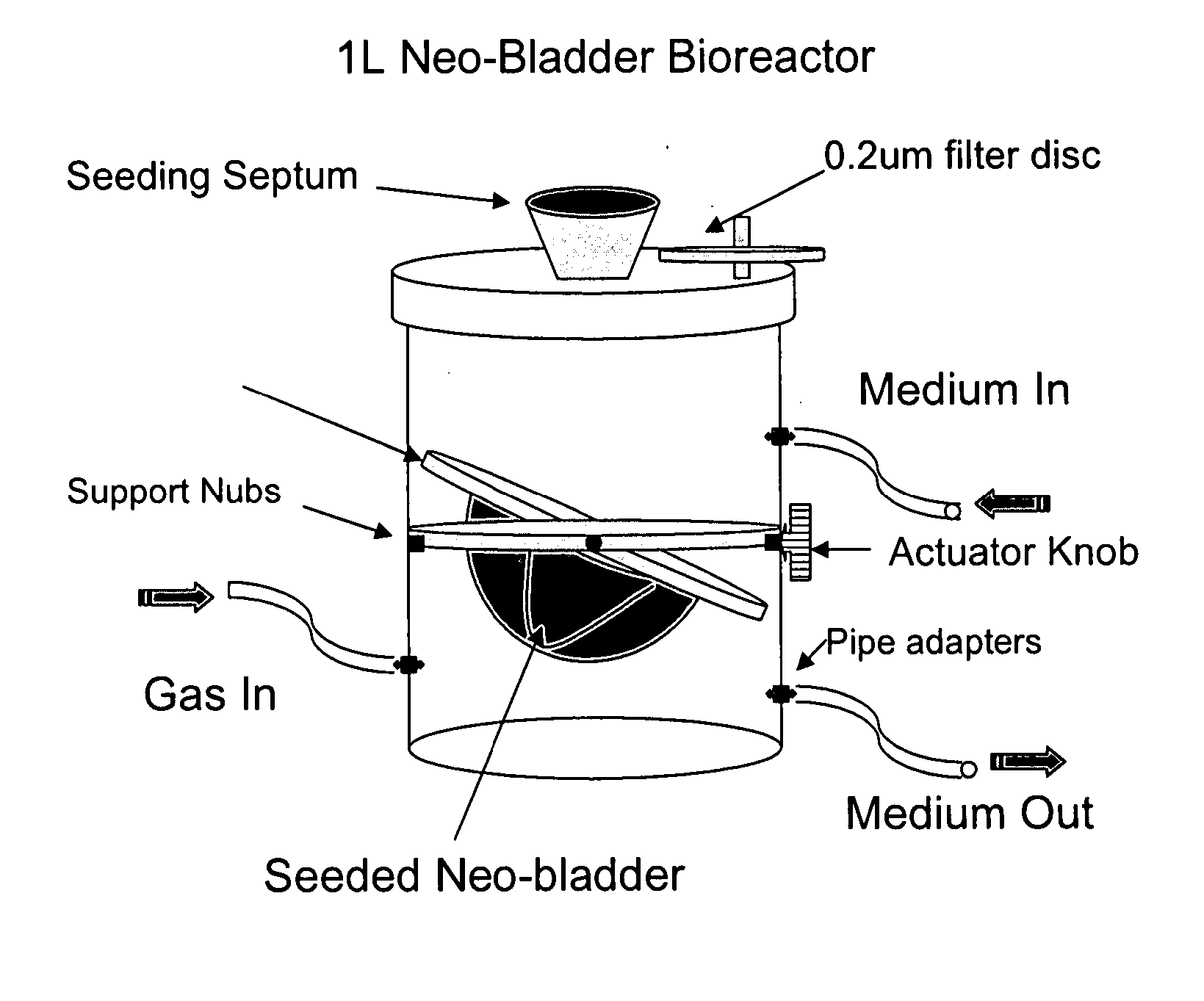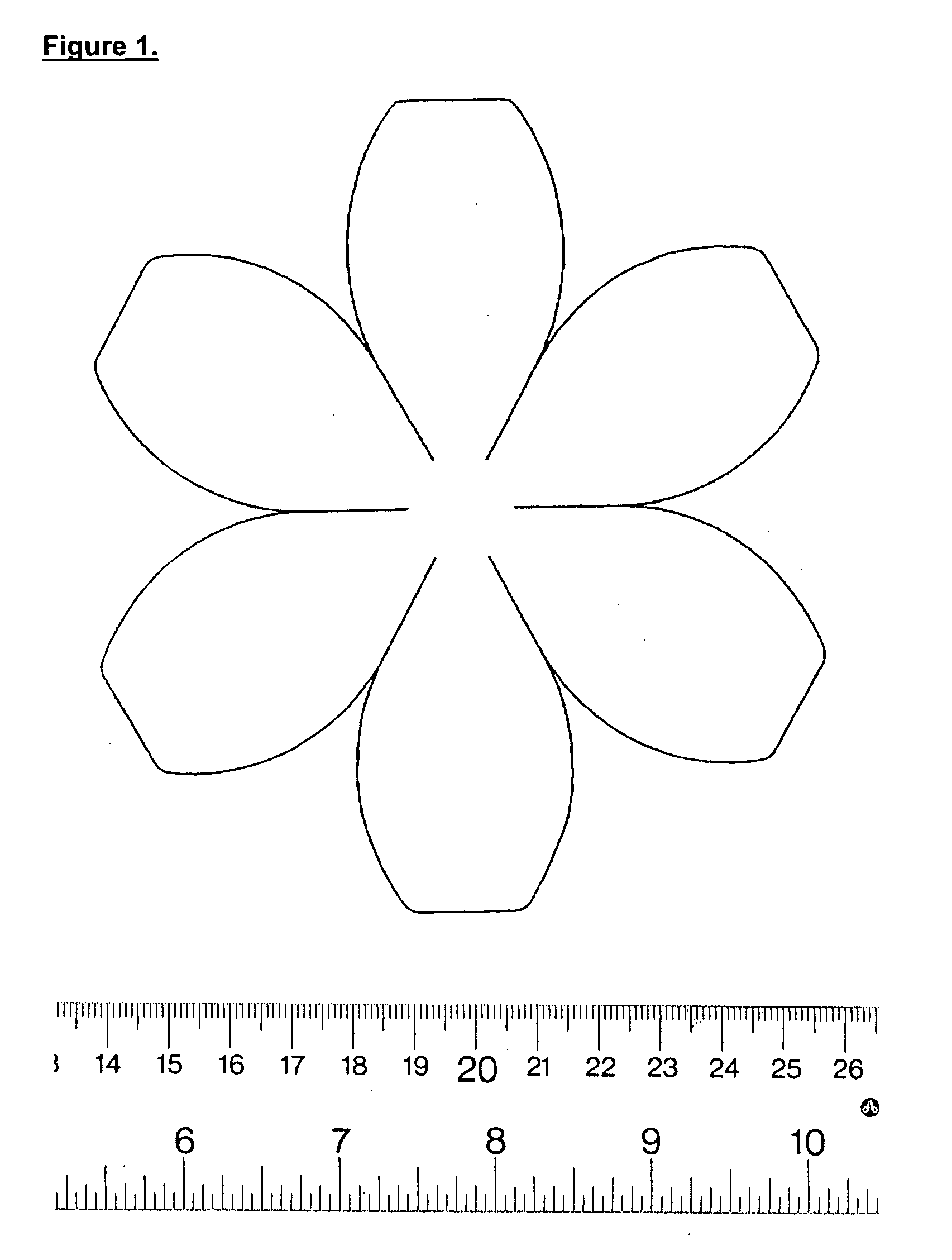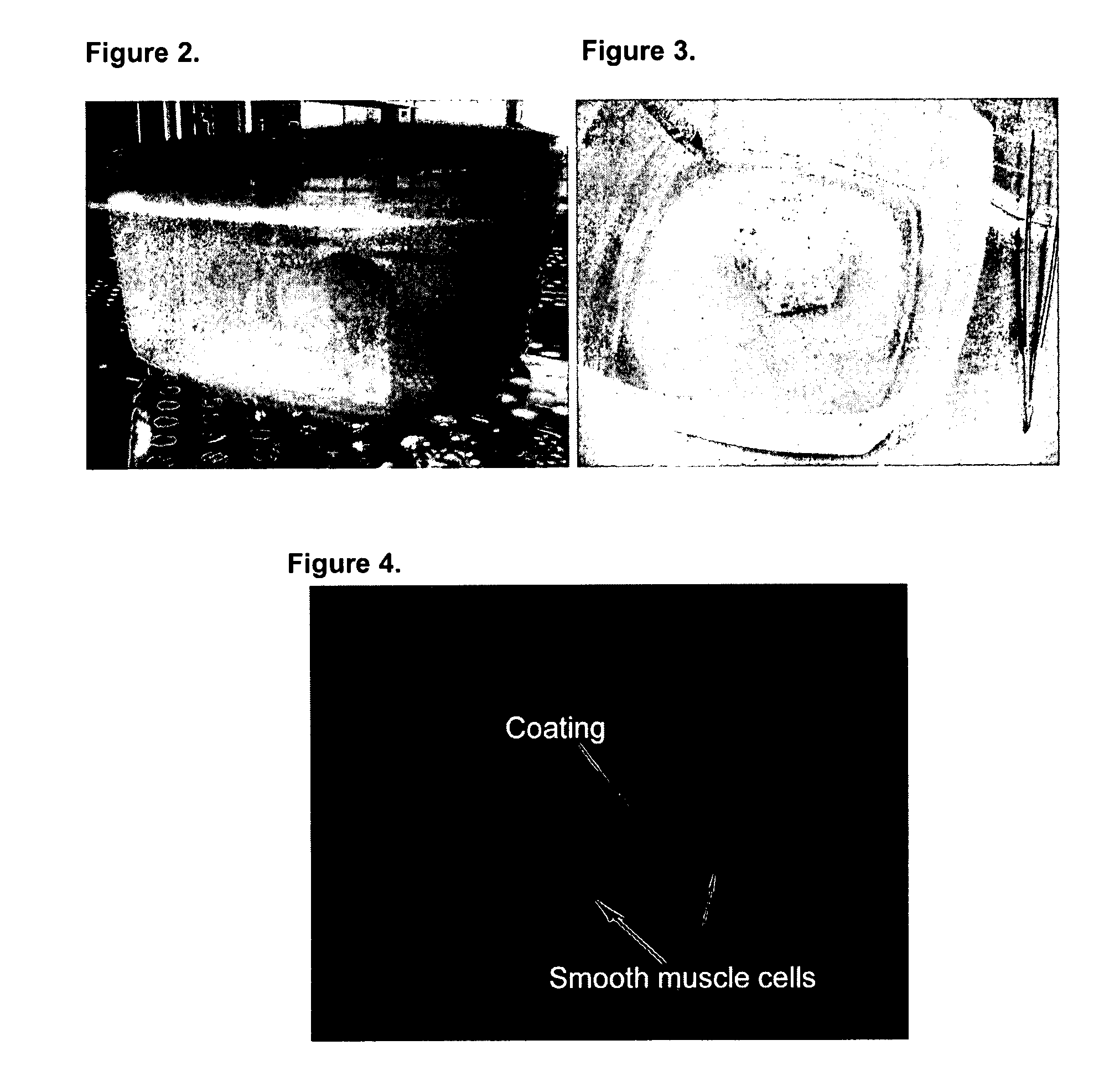Bioreactor for organ reconstruction and augmentation
a bioreactor and organ technology, applied in the field of tissue reconstruction, repair, augmentation and replacement, can solve the problems of deterioration of the urinary bladder in patients, deterioration of the bladder, and inability to achieve the same success in many other organ fields
- Summary
- Abstract
- Description
- Claims
- Application Information
AI Technical Summary
Benefits of technology
Problems solved by technology
Method used
Image
Examples
example 1
Creation of Bladder-Shaped Polymers
[0088] The neo-organ constructs described herein are presented using neo-bladder constructs as an example. While reference is made here to neo-bladder constructs, it will be understood that the methods and materials described herein are useful for creating a variety of neo-organs and neo-vessel augmentation constructs, including, for example, neo-kidney augmentation constructs.
[0089] Manufacture of the neobladder matrix or scaffold. The neobladder matrices or scaffolds are constructed using polyglycolide-polyglycolic acid (PGA) non-woven felt (BMS or Concordia 2.5 mm thick, 58 mg / cc or 99 mg / ml). The PGA non-woven felt is cut using a neo-bladder pattern as a template. The neo-bladder pattern is for example, spherical, quasi-spherical, hemispherical, or quasi-hemispherical in shape, such that bladder repair, or augmentation procedures require one hemispherical or quasi-hemispherical neo-bladder construct, while total bladder reconstruction may req...
example 2
Cell Harvest and Culture
[0098] Biopsy procurement. In contrast to previous studies in which a 1×1 cm biopsy was taken from the side of the bladder using a scalpel to dissociate the tissue, the tissue samples used to create the neobladder constructs described in this Example were obtained by taking a 1×1 cm biopsy from the bladder apex, using a staple method. Previous biopsy procedures, such as the methods described in U.S. Pat. No. 6,576,019 by Atala et al., removed tissue from the vesical dome in general. In contrast, the biopsy procedures used herein remove tissue from a specific portion of the vesical dome, the bladder apex. Removing tissue from the bladder apex has been shown to provide a greater yield of useful cells. Useful cells refers to viable cells that are capable of expansion and seeding on the neobladder scaffolds described herein.
[0099] The staple method used herein involves making a loop in the apex of the bladder, stapling the base of the loop, and excising the loo...
example 3
Cell Seeding on Polymeric Matrix or Scaffold
[0100] Neo-bladder matrix or scaffold seeding with SMC. After the smooth muscle cells (SMC) are harvested and expanded as described above in Example 2, the cell pellet is resuspended in 6 ml of SMC growth medium. The matrix or scaffold is removed from the pre-wetting container using forceps and is placed in an empty sterile cell-seeding container (see FIGS. 2 and 3, originally designed and manufactured by Tengion Inc.). The cells are distributed evenly on the outside surface of the scaffold.
[0101] Bright field microscopy (FIG. 4) confirmed that SMC do indeed take up residence within scaffolds seeded using the procedures described above.
[0102] Neobladder scaffold seeding with Urothelial Cells. After the urothelial cells (UC) are harvested and expanded, the cell pellet is resuspended in 6 ml of Construct Growth Medium 1:1 mixture of DMEM / 10% FBS:KSFM). The cells are distributed evenly on the inside surface of the scaffold (FIG. 5).
PUM
| Property | Measurement | Unit |
|---|---|---|
| pressures | aaaaa | aaaaa |
| diameter | aaaaa | aaaaa |
| pore size | aaaaa | aaaaa |
Abstract
Description
Claims
Application Information
 Login to View More
Login to View More - R&D
- Intellectual Property
- Life Sciences
- Materials
- Tech Scout
- Unparalleled Data Quality
- Higher Quality Content
- 60% Fewer Hallucinations
Browse by: Latest US Patents, China's latest patents, Technical Efficacy Thesaurus, Application Domain, Technology Topic, Popular Technical Reports.
© 2025 PatSnap. All rights reserved.Legal|Privacy policy|Modern Slavery Act Transparency Statement|Sitemap|About US| Contact US: help@patsnap.com



